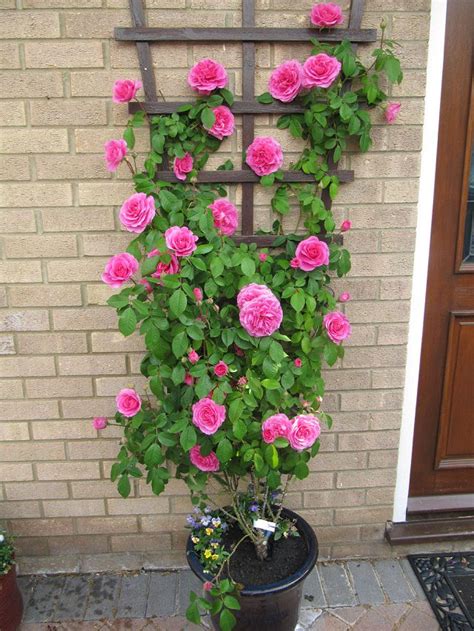Top Container Sizes for Growing Balcony Plants: Tips for Optimal Growth
Balcony gardening is a rewarding way to bring nature into small spaces, but choosing the right container sizes for your plants is essential for their health and growth. Whether you’re cultivating herbs, flowers, or vegetables, the size of the container can make or break your gardening success. In this article, we will explore how to select the best container sizes for different types of balcony plants, providing practical tips and advice on how to ensure your plants thrive in confined spaces.
Key Concepts: Why Container Size Matters
Container size directly impacts plant health by determining root space, moisture retention, and nutrient availability. A well-chosen container allows roots to expand, which supports optimal plant growth and prevents root-bound issues. Smaller containers dry out faster, meaning frequent watering, while larger containers retain moisture but may be more challenging to manage. By understanding these dynamics, balcony gardeners can tailor their container choices to meet the specific needs of their plants.
Historical Context: Evolution of Urban Balcony Gardening
The practice of balcony gardening has evolved alongside urbanization, offering city dwellers a way to connect with nature. Historically, containers were simple clay pots, but advancements in materials like plastic, fiberglass, and self-watering systems have transformed container gardening. This shift has made it easier for modern gardeners to find a range of container sizes and designs that suit their space and style.
Current State Analysis: Popular Balcony Plant Container Sizes
Today’s market offers an array of containers in different shapes and sizes, catering to a variety of balcony gardening needs. Common sizes include:
- Small (4-6 inches): Ideal for herbs like basil and mint, succulents, and small flowers.
- Medium (8-12 inches): Suitable for medium-sized plants such as petunias, pansies, or smaller vegetables like lettuce and spinach.
- Large (14-24 inches): Best for larger plants like tomatoes, peppers, or shrubs. These containers offer more soil depth, which is crucial for root development.
When selecting a container, the key is to match the pot size with the plant’s root system and growth potential.
Practical Applications: Selecting the Best Container Size
Here are practical tips for choosing the right container size for your balcony plants:
- Deep-rooted plants: Vegetables like tomatoes or carrots need containers that are at least 12 inches deep.
- Shallow-rooted plants: Herbs such as thyme, parsley, or leafy greens thrive in smaller containers, usually 6-8 inches deep.
- Consider plant size: Small plants with limited root spread can be placed in smaller pots, while larger plants need more space.
- Plan for growth: Plants grow over time, so choose a container that allows room for expansion without becoming root-bound.
Case Studies: Matching Container Sizes to Plant Needs
| Plant Type | Suggested Container Size | Additional Care Tips |
|---|---|---|
| Tomatoes | 18-24 inches deep | Use a trellis or stake for support as the plant grows. |
| Basil | 6-8 inches deep | Ensure good drainage and regular watering to prevent root rot. |
| Strawberries | 8-12 inches deep | Place in sunny locations; consider hanging baskets for space-saving. |
| Lavender | 12-14 inches deep | Requires well-drained soil and minimal watering once established. |
| Mint | 8-10 inches deep | Use separate containers to prevent invasive spreading. |
Stakeholder Analysis: Who Benefits from the Right Container Selection?
Gardeners: Optimizing container sizes leads to healthier plants and less maintenance, making balcony gardening more enjoyable and less time-consuming.
Plants: The right size container provides sufficient space for roots, leading to better growth, resilience, and yield, particularly in edible plants.
Designers: Designers benefit from knowing the best container sizes for different plant types when planning small space gardens, ensuring that aesthetics and functionality work in harmony.
Implementation Guidelines: Tips for Success
To implement these strategies successfully in your balcony garden:
- Choose containers with adequate drainage to prevent waterlogging.
- Use lightweight materials like plastic or fiberglass for ease of movement.
- Consider self-watering containers if you travel or forget to water regularly.
- Place larger containers near edges or corners to maximize space.
- Regularly monitor the plant’s growth, adjusting the container size if necessary.
Ethical Considerations: Sustainable Container Choices
As balcony gardeners, it’s important to consider the environmental impact of container choices. Opt for sustainable materials like biodegradable pots or recycled containers. Avoid single-use plastic, and consider upcycling household items (e.g., buckets or cans) into plant containers. This approach reduces waste while also contributing to a circular economy.
Limitations and Future Research
One limitation in container size selection is the variability in plant growth, which can be influenced by local climate conditions, soil quality, and care. More research is needed on adaptive container designs that allow expansion as plants grow. Future innovations could include modular containers or systems that integrate self-regulation of water and nutrients.
Expert Commentary: Balancing Container Size and Plant Health
Choosing the right container size is critical for a thriving balcony garden. According to horticulturists, the success of a plant often hinges on the balance between root space and nutrient availability. One expert highlights that “plants are more resilient when their roots have space to grow, and containers offer a controlled environment to manage soil quality and water retention.” Another expert emphasizes, “The container size must be based not only on the plant’s current size but its future growth. A tomato plant may look small when first planted, but it will need a substantial container to support its mature size.”
In conclusion, by carefully selecting the right container sizes, you can ensure that your balcony plants flourish and bring beauty and sustenance to your living space. Apply these strategies to create a thriving balcony garden that suits your unique environment and design preferences.


